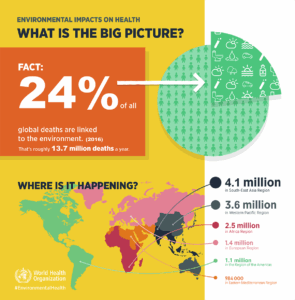What happens when your body reacts violently to things no one else seems to notice? Perfume. Wi-Fi. Cleaning products. Electricity. For a growing number of people, this isn’t an abstract question – it’s everyday life. And it has a name: Idiopathic Environmental Intolerance (IEI).
Often misunderstood, dismissed, or misdiagnosed, IEI is a condition where individuals experience a range of symptoms in response to various environmental exposures, despite no clear toxicological cause. This complex phenomenon raises questions not just about the hidden health costs of modern living, but about how our bodies are trying to adapt (or protest) against a world we may no longer be fully suited for.
What Is Idiopathic Environmental Intolerance (IEI)?
IEI, sometimes referred to as “multiple chemical sensitivity” (MCS) or “environmental illness,” is characterized by adverse reactions to low-level exposures from various environmental agents. These can include:
or “environmental illness,” is characterized by adverse reactions to low-level exposures from various environmental agents. These can include:
- Fragrances and synthetic perfumes
- Cleaning agents and detergents
- Off-gassing from plastics or furniture
- Mold spores or dust
- Electromagnetic fields (EMFs)
- Pesticides or synthetic fertilizers
What makes IEI particularly confounding is its lack of a consistent biomarker or diagnostic test. There’s no lab panel that definitively identifies it. Instead, diagnosis tends to be based on symptoms, patterns, and patient history – often only after extensively ruling out other conditions.
Common Symptoms of IEI
People with IEI report a wide spectrum of symptoms:
- Headaches or migraines
- Fatigue and brain fog
- Respiratory irritation
- Skin rashes or itching
- Dizziness or heart palpitations
- Sleep disturbances
- Anxiety and mood swings
These symptoms can range from mild to debilitating and may occur in response to everyday exposures like entering a store, turning on a Wi-Fi router, or walking past a freshly cleaned office.
Why Is IEI Often Dismissed?
One of the biggest barriers to legitimacy for IEI sufferers is that their condition doesn’t “show up” on standard medical scans or tests. This leads many in the conventional medical system to attribute the issue to psychological factors – stress, trauma, or anxiety.
While there is merit in considering how mental and physical health intertwine, dismissing IEI as “all in the head” misses the bigger picture: our modern environment has changed drastically in a short time, and our biology is struggling to play catch-up. Some bodies are simply more sensitive than others – canaries in the coal mine of modern civilization.
EMFs: The Invisible Trigger
Among the most controversial aspects of IEI is electromagnetic hypersensitivity (EHS) – a condition where people experience adverse symptoms from exposure to EMFs emitted by devices like:
(EHS) – a condition where people experience adverse symptoms from exposure to EMFs emitted by devices like:
- Cell phones
- Wi-Fi routers
- Smart meters
- Power lines
- Bluetooth-enabled devices
Although mainstream authorities often cite a lack of consistent data linking EMFs to EHS, emerging research suggests otherwise. Some studies show increased oxidative stress, calcium channel disruption, and neuroinflammation in response to prolonged EMF exposure, especially in people with preexisting vulnerabilities.
And importantly, sensitivity doesn’t require belief. In double-blind experiments, some EMF-sensitive individuals have shown physiological changes without knowing whether they were being exposed or not, suggesting the phenomenon isn’t purely psychosomatic.
EMF Exposure and Aires: A Practical Layer of Support
For those navigating EMF-related symptoms, mitigation strategies are key. Alongside lifestyle changes like unplugging Wi-Fi at night, grounding, and using shielding fabrics, some turn to bioenergetic technologies designed to support the body’s adaptive capacity.

One such option is Aires, a company that develops scientifically engineered devices that interact with EMFs at the quantum level to help reduce biological stress. Their products are designed to modulate how EMFs interact with the body, rather than simply block them – a key difference in approach.
While no tool can promise total protection, many users report noticeable improvements in clarity, focus, and sleep quality, particularly when paired with other environmental health practices. Aires products are compact, portable, and easy to integrate into daily life, whether worn on the body, placed on devices, or used in the home.
For individuals experiencing IEI or EHS, Aires offers a low-barrier starting point in a much larger healing journey. As always, it’s important to track your own symptoms and work with practitioners open to functional or environmental medicine approaches.
IEI and the Modern World: A Collision Course
IEI forces us to ask hard questions about the assumed safety of our modern lifestyle. How can we normalize daily exposure to synthetic chemicals, artificial lighting, industrial pollutants, and invisible radiation – and not expect consequences?
This isn’t a fringe issue. The World Health Organization estimates that environmental factors contribute to nearly 25% of all diseases globally, including asthma, heart disease, and neurological disorders. IEI may be a more sensitive manifestation of a deeper problem: our disconnect from the natural world.

The Isolation of the Intolerant
One of the most painful aspects of IEI isn’t the symptoms – it’s the social isolation. Friends and family may not understand. Doctors may gaslight or downplay concerns. Employers may view accommodations as unreasonable.
IEI sufferers often find themselves designing their entire lives around avoidance:
- Moving to rural or low-EMF zones
- Wearing protective clothing
- Using air purifiers or EMF shielding
- Avoiding public spaces entirely
This lifestyle shift can strain relationships, career opportunities, and mental health. It’s not just a health issue – it’s a human issue.
Reframing IEI: From Disorder to Signal
What if we stopped viewing IEI as a “disorder,” and started seeing it as the body’s intelligent feedback?
In a culture that rewards suppression – of symptoms, intuition, and dis-ease – IEI may be the body’s cry for re-alignment. Instead of medicating away the discomfort or dismissing it outright, we could listen to it as information.
Maybe the person who can’t tolerate chemical-laden cleaners isn’t weak, but ahead of the curve.
Maybe the person who gets a headache from Wi-Fi isn’t broken, but biologically attuned to invisible shifts in their environment.
And maybe the rise in IEI signals not an epidemic of fragility, but a call to radically reconsider what we accept as “normal” living conditions.
What Can You Do?
Whether you’ve been diagnosed with IEI, suspect you may be sensitive to environmental triggers, or simply want to support your health in an increasingly synthetic world, here are some action steps:
Simplify Your Space
Use natural cleaners, fragrance-free products, and open your windows regularly. Consider swapping plastic for glass or stainless steel.
Consider swapping plastic for glass or stainless steel.
Reduce EMF Load
Turn off devices when not in use, especially at night. Hardwire your internet when possible, and avoid carrying your phone in your pocket.
Support Your Nervous System
IEI often coincides with dysregulation of the autonomic nervous system. Breathwork, cold exposure, vagal toning, and nature immersion can help recalibrate your baseline.
Consider Smart Tools Like Aires
If EMF sensitivity is on your radar, Aires offers a promising, non-invasive option to help your body better cope with the load.
Find Your People
IEI can feel lonely, but you’re not alone. Look for support groups, online forums, or functional medicine practitioners who take these concerns seriously.
Conclusion: A Planetary Canary Song
Idiopathic Environmental Intolerance may not come with a clear test result, but it does come with a message – one we’d be wise to head. As we hurtle forward in our synthetic evolution, IEI sufferers serve as canaries in the digital and chemical coal mines.
does come with a message – one we’d be wise to head. As we hurtle forward in our synthetic evolution, IEI sufferers serve as canaries in the digital and chemical coal mines.
Instead of ignoring or shaming those who are sensitive, we can learn from them. About the state of our environment. About the power of the body’s feedback. And about how to build a future that respects both high-tech innovation and biological truth.
The more we listen to our bodies, to each other, and to nature, the better our chances of not just surviving this modern experiment, but thriving in harmony with it.








